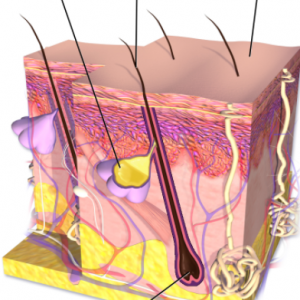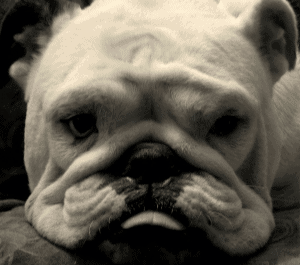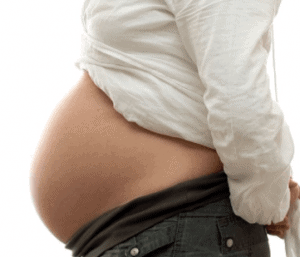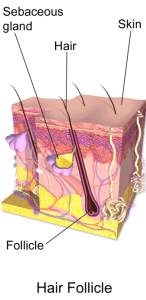
Platelet-rich plasma (PRP) has been used by physicians to treat soft tissue injury and speed the healing process. PRP is becoming a very popular treatment in dermatology and has been used for skin rejuvenation, hyperpigmentation, acne, wrinkles, stretch marks and hair loss. It is also a treatment for hair loss: The Vampire Treatment, Platelet Rich Plasma Therapy (PRP) Treatment For Hair Loss, PRP for Androgenetic Alopecia – A Review of the Evidence.
What is PRP and how does it work?
PRP is prepared by taking a blood sample from the patient, then centrifuging it to separate the red blood cells and the PRP. Activators (this is often calcium chloride) are added to the PRP to activate the platelets to release multiple growth factors. These growth factors work in the skin and hair follicles to encourage cell survival, blood supply and growth. To learn more about how PRP works, see this post: Platelet Rich Plasma Therapy (PRP) Treatment For Hair Loss.
PRP for skin rejuvenation
 Skin changes with age are the result of connective tissue breakdown. Collagen is a key component of connective tissue, and collagen accumulation in the skin declines with age. As a result, skin begins to wrinkle and become more fragile 1.
Skin changes with age are the result of connective tissue breakdown. Collagen is a key component of connective tissue, and collagen accumulation in the skin declines with age. As a result, skin begins to wrinkle and become more fragile 1.
PRP contains growth factors and other molecules that can activate fibroblasts. These cells stimulate collagen production and aid in skin rejuvenation 2.
One study examined the effect of 3 PRP injections (each 2 weeks apart) in 10 healthy people 3. PRP injections were provided in the forehead, jaw and around the eyes (where “crow’s feet” wrinkles are common). After treatment, dermatologists reported an increase in the appearance of skin firmness and reduced sagging.
In another study, researchers examined the effects of PRP treatment on signs of skin ageing in 20 adult female participants 4. They compared PRP injections (which were prepared with a sample of the patient’s own blood) to injection of a ready-made growth factor mixture. The patients received 6 treatments, each 2 weeks of part. One side of the face received PRP and the other side received the growth factor mixture. At the end of the study, PRP was associated with greater patient satisfaction. The researchers also asked patients to return for a 6-month follow up and reported the effects of PRP lasted longer than the effects of the growth factor mixture.
Nasolabial folds are commonly referred to as “laugh lines” or “smile lines” that extend from the side of the nose down to the corner of the mouth. A study examined the effects of a single PRP injection among patients with multiple types of wrinkles and results showed a 25% or greater reduction in nasolabial folds in 14 out of 17 patients with this type of wrinkle 5.
PRP for hyperpigmentation
Periorbital hyperpigmentation refers to dark circles around the eyes. There are many factors that contribute to the development of these dark circles. One possible factor is the presence of melanocytes, which are cells that produce melanin or pigment 6. Some of the growth factors present in PRP are thought to improve the appearance of these dark circles. These growth factors may reduce melanin production, which reduces the dark appearance of the skin. One study examined the use of PRP in 30 patients with periorbital hyperpigmentation and results showed it was as effective as other treatment options 7.
PRP for stretch marks
Stretch marks are commonly associated with pregnancy, but can also occur following adolescent growth spurts, in patients with diabetes, obesity or a large weight change 8. Stretch marks are not associated with health risks, but they can be stressful or upsetting for the individual. Current treatments include topical creams and oils, and lasers 8. Carboxytherapy has also been used, and this treatment involves injections of carbon dioxide gas into the tissue.
A study compared the effects of PRP versus carboxytherapy in 20 patients with stretch marks 9. Patients received 4 treatments, each 3 to 4 weeks apart. PRP was given on the right side and carboxytherapy was given on the left side, and the effects were compared. PRP was shown to be as effective as carboxytherapy for the treatment of stretch marks.
PRP for acne
Acne affects individuals of all ages, and is especially common among adolescents and young adults. There are many different treatments available, including topical washes and creams, retinoids and antibiotics. Unfortunately, many of these treatments are associated with side effects like dry skin, peeling skin, and sometimes more serious events 10. Scarring is also associated with acne. In a study of 30 patients with post-acne scars, 13.3% showed excellent improvement following PRP treatment11. In another study of patients with mild to moderate acne scars, PRP treatment in combination with fractional laser treatment increased efficacy of the treatment and was associated with a reduced severity of swelling and redness 12.
PRP for hair loss
Several studies have shown a positive effect of PRP treatment for hair loss conditions such as alopecia areata and androgenetic alopecia. For more information on PRP treatment for hair loss, see these pages: The Vampire Treatment, Platelet Rich Plasma Therapy (PRP) Treatment For Hair Loss, PRP for Androgenetic Alopecia – A Review of the Evidence
References
- Calleja-Agius, J., Brincat, M. & Borg, M. Skin connective tissue and ageing. Best Pract. Res. Clin. Obstet. Gynaecol. 27, 727–740 (2013).
- Elghblawi, E. Platelet-rich plasma, the ultimate secret for youthful skin elixir and hair growth triggering. J. Cosmet. Dermatol. (2017). doi:10.1111/jocd.12404
- Yuksel, E. P., Sahin, G., Aydin, F., Senturk, N. & Turanli, A. Y. Evaluation of effects of platelet-rich plasma on human facial skin. J. Cosmet. Laser Ther. Off. Publ. Eur. Soc. Laser Dermatol. 16, 206–208 (2014).
- Gawdat, H. I., Tawdy, A. M., Hegazy, R. A., Zakaria, M. M. & Allam, R. S. Autologous platelet-rich plasma versus readymade growth factors in skin rejuvenation: A split face study. J. Cosmet. Dermatol. 16, 258–264 (2017).
- Elnehrawy, N. Y., Ibrahim, Z. A., Eltoukhy, A. M. & Nagy, H. M. Assessment of the efficacy and safety of single platelet-rich plasma injection on different types and grades of facial wrinkles. J. Cosmet. Dermatol. 16, 103–111 (2017).
- Sarkar, R. et al. Periorbital hyperpigmentation: a comprehensive review. J Clin Aesthet Dermatol 9, 49–55 (2016).
- Nofal, E. et al. Evaluation of carboxytherapy and platelet-rich plasma in treatment of periorbital hyperpigmentation: A comparative clinical trial. J. Cosmet. Dermatol. (2018). doi:10.1111/jocd.12478
- Liu, L., Ma, H. & Li, Y. Interventions for the treatment of stretch marks: a systematic review. Cutis 94, 66–72 (2014).
- Hodeib, A. A., Hassan, G. F. R., Ragab, M. N. M. & Hasby, E. A. Clinical and immunohistochemical comparative study of the efficacy of carboxytherapy vs platelet-rich plasma in treatment of stretch marks. J. Cosmet. Dermatol. (2018). doi:10.1111/jocd.12481
- Cervantes, J. et al. The role of zinc in the treatment of acne: A review of the literature. Dermatol. Ther. (2017). doi:10.1111/dth.12576
- Abdel Aal, A. M., Ibrahim, I. M., Sami, N. A. & Abdel Kareem, I. M. Evaluation of autologous platelet-rich plasma plus ablative carbon dioxide fractional laser in the treatment of acne scars. J. Cosmet. Laser Ther. Off. Publ. Eur. Soc. Laser Dermatol. 1–8 (2017). doi:10.1080/14764172.2017.1368667
- Min, S. et al. Combination of platelet rich plasma in fractional carbon dioxide laser treatment increased clinical efficacy of for acne scar by enhancement of collagen production and modulation of laser-induced inflammation. Lasers Surg. Med. (2017). doi:10.1002/lsm.22776














